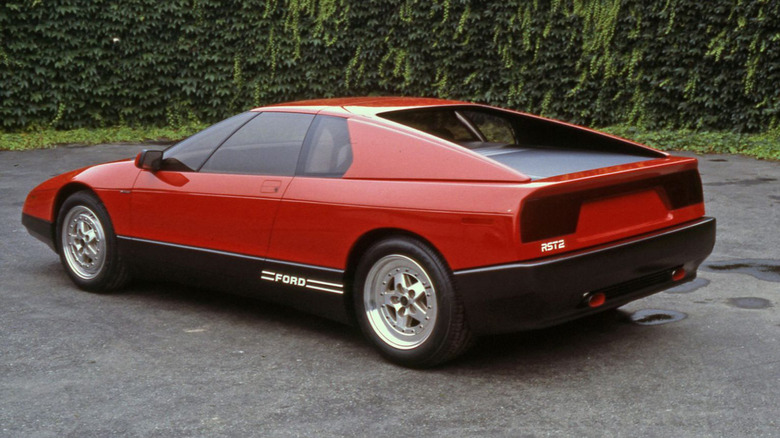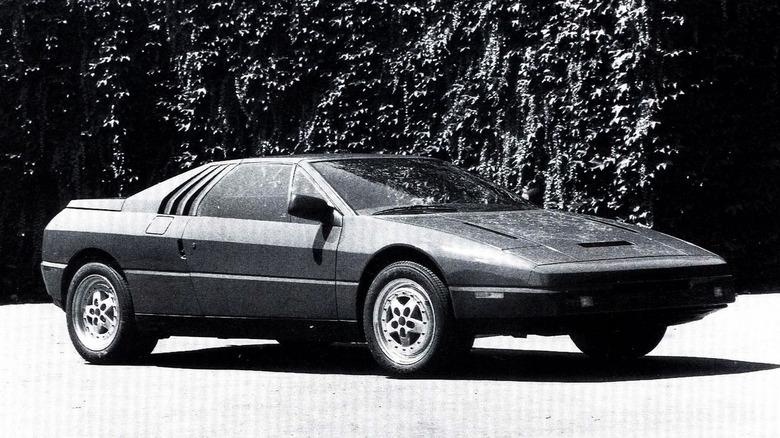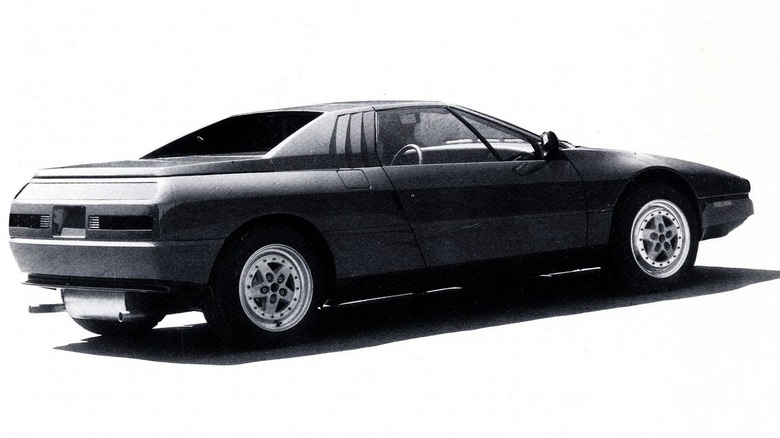The Forgotten Ford Concept Car That Could've Been America's Ferrari
Imagine a wide, low, mid-engined Ford and you'll be thinking about the GT40, or perhaps its more recent GT child and grandchild, which we also wrote about recently. But while these cars took on Ferrari at Le Mans, the blue oval once dreamed of taking on the prancing horse on the road too, with a supercar called the Maya.
Revealed as a concept in 1984, the Maya was a dramatic departure from the Ford norm. For a company producing humdrum cars like the Sierra and Escort, revealing a midship supercar styled by Italdesign and with pop-up headlights must have felt akin to Ferrari launching a family hatchback.
But that's exactly what it did, at the '84 Turin motor show. Although displayed as a "realistic prototype" and not a production-ready car, Ford and Italdesign said that the Maya was intended for the US market with a production rate of 50 per day, says Italdesign, or about 18,000 a year. That's 4,000 more than Ferrari's expected 2022 production.
Wedge-shaped, but with a plastic deformable bumper to comply with US crash regulations, the Ford Maya was intended to be powered by a mid-mounted 3.0-liter V6 engine, says Italdesign, sending 250 horsepower to the rear wheels via a five-speed manual transmission.
Intended to be jointly developed with Yamaha, that engine wasn't actually installed in the 1984 show car. Instead, TopGear says, the first Maya prototype was powered by a far less glamorous — and far less powerful — Ford V6 producing a modest 142 horsepower.
Penned by Giorgetto Giugiaro
The two-seat cabin featured a steering wheel with all of the car's main controls on its center, including lights and turn signal buttons that replaced traditional stalks — something Ferrari would bring to its own road cars some 20 years later.
The Maya's cabin wasn't short on space, with no center console ahead of the gear shifter, and storage space behind the two seats for soft bags, says Ford Authority. In other words, Ford wanted to produce a practical, everyday supercar that might even have competed with the Porsche 911, the gold standard of that particular automotive genre.
It also featured independent rear suspension made from aluminum, a double-wishbone setup at the front and the potential for Ford to take on iconic sports cars like the Chevrolet Corvette.
Penned by Giorgetto Giugiaro, who also has the Ferrari 250 GT and Volkswagen Golf mk1 on his resume, the Maya shared its wedge shape with the DeLorean DMC-12 of Back To The Future fame and the Lotus Esprit, both also products of Giugiaro's sketchpad.
But, while it shared its exotic shape with such esteemed British and Italian companies, the Maya's genius was that it would underpin the poster-car looks with mass-market components already produced for other Ford vehicles, TopGear explains.
A tantalizing what-if moment
A second generation called the Maya II ES premiered at the 1985 Turin auto show, featuring a central front air intake similar to those used by Ferrari, Italdesign says, and a flame-red color scheme that was later switched to two tones of gray.
After that, a third generation called the Maya II EM was produced later the same year, this time with revised rear lights and hood, and powered by a 3.0-liter, twin-turbocharged Ford V6 producing 300 horsepower. But sadly none of these concepts were turned into a production car.
There is no definitive reason for Ford's decision not to go ahead with the Maya. Unlike other concepts that failed to materialize, a turbulent economy can't be blamed. Indeed, the recovering US was in good economic shape at the time, and in the first quarter of 1984 new auto sales rose to their highest levels since 1979.
We'll never know what the Maya might have done to the Ford of today. Perhaps it would have endured as successfully as the Mustang or disappeared as quickly as it arrived. Ultimately, it remains as nothing more than a tantalizing what-if moment for the blue oval.


